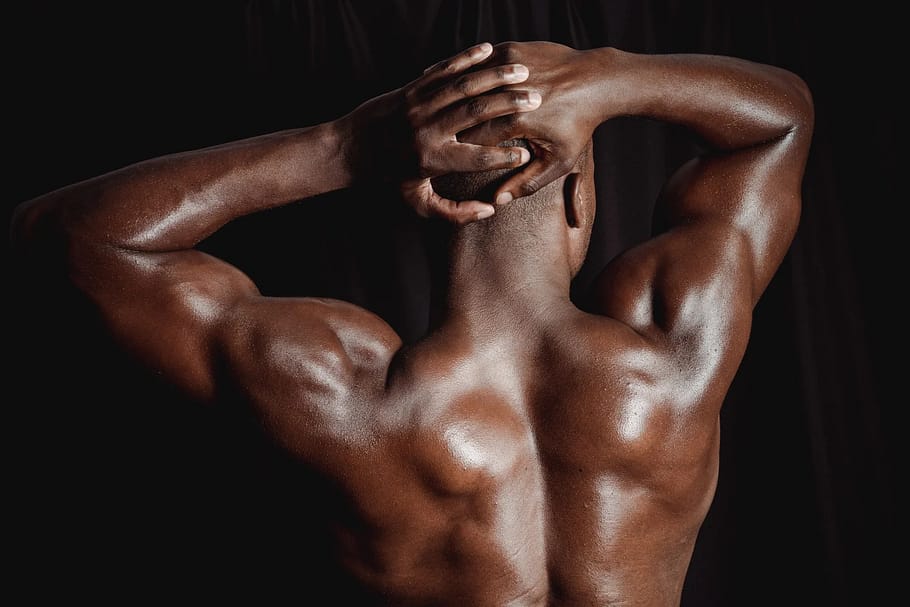The Crucial Role of Rest and Recovery in Achieving Weight Loss and Muscle Growth
In the relentless pursuit of fitness goals, the importance of pushing oneself is often emphasized. However, the often-overlooked counterpart to strenuous workouts is rest and recovery. In this fast-paced world, where every moment seems precious, allocating time for rest days. Quality sleep, and strategic recovery techniques might appear counterproductive. Yet, understanding the profound impact that rest and recovery have on weight loss and muscle growth can reshape our approach to fitness. This article will delve into the significance of Rest and Recovery for Weight Loss. Explore the vital role of sleep, and uncover effective recovery techniques in the context of achieving weight loss and muscle growth.
Rest Days: More Than Just a Pause
First and foremost, it’s crucial to recognize that rest days are not mere breaks but strategic components of a successful fitness regimen.
Rest days, far from being days of inactivity, serve as the foundation upon which progress is built. These days allow the body to repair and rebuild itself after intense workouts. Muscles microscopically torn during exercise require time to heal and grow stronger. Consequently, integrating well-planned rest days into your routine can lead to enhanced muscle recovery and overall performance.
Sleep: A Cornerstone of Well-Being

Equally vital to muscle recovery and weight loss is the quality and duration of sleep.
Sleep is not merely a period of unconsciousness; it’s a critical phase during which the body undergoes repair and regeneration. Deep sleep, characterized by slower brain waves, is when the body releases growth hormone—essential for muscle recovery and development. In essence, quality sleep isn’t a luxury but a necessity for optimizing both weight loss and muscle growth.
Weight Loss: The Unseen Beneficiary

Let’s delve into the relationship between rest, recovery, and weight loss.
Weight loss isn’t solely about calorie deficits and intense workouts. It’s a holistic process that requires a harmonious balance between exertion and rejuvenation. Rest days play a pivotal role here—by allowing the body to reset and replenish energy reserves. They optimize metabolism and hormonal balance. Consequently, incorporating rest days into your routine can contribute to sustainable weight loss by preventing burnout and promoting metabolic efficiency.
Muscle Growth: Beyond the Gym

Similarly, effective muscle growth is not confined to the gym but is intricately tied to recovery strategies.
In the pursuit of muscle gains, it’s easy to fall into the trap of overtraining, believing that more workouts equate to better results. However, this perspective disregards the body’s need for recovery. Applying targeted recovery techniques, such as foam rolling, stretching, and active recovery sessions, can foster optimal muscle growth by enhancing blood circulation and preventing injuries.
Strategic Recovery Techniques: Elevating Progress

Now, let’s explore various recovery techniques that can amplify the benefits of rest days and sleep.
Active recovery, involving low-intensity exercises, is an effective way to stimulate blood flow to recovering muscles without inducing further stress. Foam rolling, a form of self-myofascial release, can alleviate muscle tension and improve flexibility, expediting the recovery process. By incorporating these techniques into your routine, you can maximize the positive impact of rest and sleep on weight loss and muscle growth.
Embrace the Restorative Journey
In conclusion, the journey towards weight loss and muscle growth is a multifaceted one that necessitates holistic attention.
In the pursuit of fitness goals, the significance of rest days, quality sleep, and recovery techniques cannot be overstated. By recognizing rest and recovery as integral components of the process, we can reshape our approach to fitness, fostering sustainable progress and preventing burnout.
In essence, the path to optimal well-being and physical transformation isn’t about incessant exertion, but about embracing a harmonious balance between effort and restoration.
So, as you embark on your fitness journey, remember that rest is not a sign of weakness. It’s a symbol of wisdom and foresight that will propel you towards your goals with greater vitality and longevity.
-
5 O’ CLOCK SPORTS 2018 Leather Gym Accessory Combo (Brown)
$749.00 -
5 O’ CLOCK SPORTS New Version Premium Sports Combo of Body Building (Wine)
Original price was: $780.00.$664.00Current price is: $664.00. -
5 O’ CLOCK SPORTS New Version Premium Sports Combo of Body Building Bag (Black) Gym/Fitness Kit/Combo/Gym Accessories/Gym Kit/for Men and Women
Original price was: $1,200.00.$745.00Current price is: $745.00. -
5 O’CLOCK SPORTS Combo of Red Polyester Gym Bag with Shoe Compartment, Red Gym Gloves and Red 500 ml Spider Shaker Bottle Gym kit for Men and Women ll Gym Bag with Shoe Compartment Gym & Fitness Kit
Original price was: $980.00.$749.00Current price is: $749.00. -
Advance MuscleMass WHEYLOADER (Protein Funnel) with pill compartment Gym accessory ( Whey Protein / Mass Gainer)
Original price was: $390.00.$243.00Current price is: $243.00. -
Aegon Gym Ball for Exercise | Anti-Burst Swiss Yoga Exercise Ball for Workout | Physio Balance Ball for Training | Birthing | Stability Ball | Yoga Accessories with Foot Pump
Original price was: $749.00.$649.00Current price is: $649.00. -
Aegon Sit Up Assistant Device Bar | Abs Master Home Gym | Crunches Equipment | Gym Instrument for Home Workout | Abdomen Exercise Push Up | Abs Workout Equipment with Self Suction | Adjustable & Portable (Advanced) Colour May Vary
Original price was: $799.00.$699.00Current price is: $699.00. -
Amazon Brand – Symactive PVC 10 Kg Home Gym Set with Accessories & Gym Bag (10 Kg PVC Weight, 3 Ft Curl Rod, 14” Dumbbell Rods Pair, 4 Locks/Clippers, Skipping Rope, Gloves, Gripper, Bag)
Original price was: $1,049.00.$949.00Current price is: $949.00. -
AmazonBasics 1.5in Exercise Rope for Strength Training, 30ft, Polyester, Black
Original price was: $3,400.00.$2,619.00Current price is: $2,619.00.



















Leave a Reply